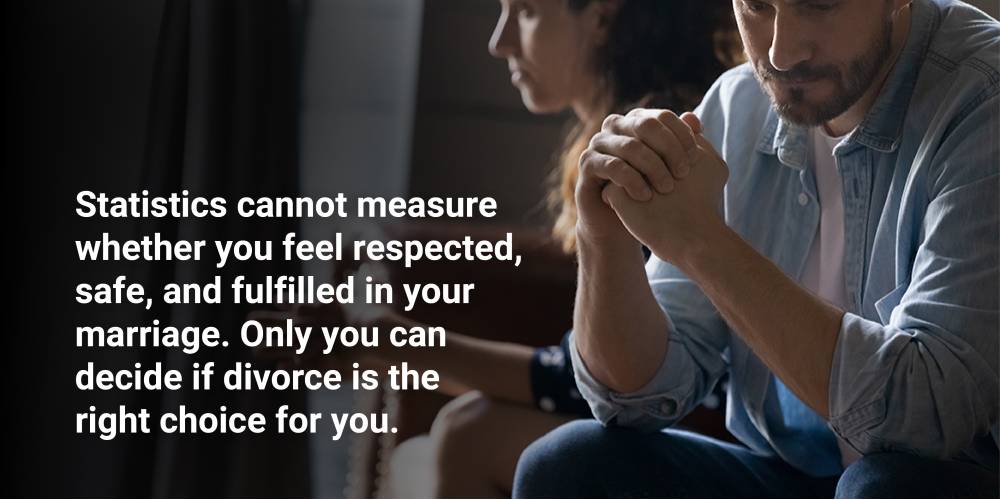Are Arranged Marriages More or Less Likely to End in Divorce?
 Depending on your cultural background, the idea of an arranged marriage might feel outdated, unfamiliar, or even surprising. However, for some, arranged marriages are a completely normal, respected, and even expected tradition. While it may seem like an old-world concept in the United States, arranged marriages remain common across the world. Divorce statistics from these marriages raise important questions about stability and expectations in marriage.
Depending on your cultural background, the idea of an arranged marriage might feel outdated, unfamiliar, or even surprising. However, for some, arranged marriages are a completely normal, respected, and even expected tradition. While it may seem like an old-world concept in the United States, arranged marriages remain common across the world. Divorce statistics from these marriages raise important questions about stability and expectations in marriage.
Sometimes, people who come from cultures that do not have arranged marriages idealize the idea of having a partner chosen for you by the people who know you best. The truth is, whatever strategy you use to get married, a happy marriage is no guarantee. If you are living in Illinois and are thinking about divorce, you may be wondering whether the statistics on arranged marriages have anything to say about your own situation. Getting to the bottom of how many arranged marriages last is more complicated than just looking at the numbers.
At Goostree Law Group, our Yorkville, IL family law attorneys provide clear guidance to clients trying to end their marriages. We work to make sure that every client understands their rights under the law and feels supported during divorce. Get started with a free consultation.
Global Numbers on Arranged Marriages and Divorce
Around the world, arranged marriages are still quite common. Research suggests that more than half of marriages worldwide are arranged in some form. In certain countries such as India, arranged marriages make up about 90 percent of all unions. Divorce rates in these countries are much lower than in the United States. Some studies estimate divorce in arranged marriages is around six percent compared to as much as 50 percent in the U.S.
At first glance, this may sound like arranged marriages are more stable than marriages where people choose their own partners. But these statistics do not tell the whole story. Cultural norms, social pressures, and religious teachings about divorce can influence whether people are free to divorce. For example, in cultures where divorce is stigmatized or legal only in certain situations, people may stay married even when they are very unhappy. This lowers the divorce rate but does not necessarily say anything about the true quality of the marriage.
Arranged Marriage vs. Forced Marriage
It is important to distinguish arranged marriage from forced marriage. In an arranged marriage, families play a strong role in introducing and approving partners, but the couple still has to say yes to the marriage. In many modern arranged marriages, people can say no to a match or end an engagement if they do not feel comfortable.
By contrast, a forced marriage removes that freedom. Forced marriages often involve minors, usually young women, who are made to marry without their consent. These situations are very different and raise serious concerns about human rights. Discussions about arranged marriages must be careful not to mix the two.
Why Arranged Marriages Can Seem to Last Longer
One reason arranged marriages seem more stable is that families try to match people with similar backgrounds. Many of the most common causes of divorce in the U.S. are over money, religion, parenting, or major lifestyle differences. These are avoided when both partners begin with the same values and expectations.
Another factor is the support system couples get in different societies. In arranged marriages, extended families often remain very involved. They may offer childcare, financial support, and social connections. This community-based structure can lower stress and make a marriage of any kind stronger. However, the same family pressure that supports the marriage can also discourage divorce, even in unhealthy situations.
Arranged Marriage and Divorce in Illinois
In Illinois, whether your marriage was arranged or not, the same laws apply if you decide to divorce. Illinois is a no-fault divorce state, which means that neither spouse needs to prove someone did something wrong. Instead, the only legal reason for divorce is "irreconcilable differences" (750 ILCS 5/401).
For couples who want to get divorced, this means you do not have to justify why you want to. You just have to show that the marriage is no longer sustainable. The court will focus on dividing property fairly, making a parenting plan that is good for the children, and dealing with financial issues like alimony and child support.
For spouses coming from cultures where arranged marriage is the norm, divorce may feel very scary. Families may disapprove, or religious communities may frown on the idea of separation. But Illinois courts focus only on the best interests of the child and fair outcomes between spouses, not cultural pressure to stay married.
If you are in an arranged marriage and considering divorce, it is important to know that Illinois law protects your right to leave an unhealthy or unhappy relationship. Likewise, if your marriage was not arranged, you are entitled to the same protections and process.

When Is Divorce the Best Choice for an Arranged Marriage?
It is easy to feel discouraged when reading statistics about marriage and divorce. You may wonder whether your marriage is more likely to succeed or fail based on how it began. But the truth is that your relationship, your happiness, and your children’s well-being matter far more than numbers. Statistics cannot measure whether you feel respected, safe, and fulfilled in your marriage. They also cannot predict whether divorce might actually be the best decision for you and your family.
No matter how your marriage began, divorce may be necessary. If you and your spouse are always fighting, if one of you feels unheard or unloved, or if serious problems make the marriage unworkable, divorce can give you a chance to move forward.
Contact a Yorkville, IL Divorce Lawyer for Arranged Marriages
Whether your marriage was arranged by family or chosen on your own, what matters now is whether it continues to meet your needs and support your happiness. If you are considering divorce in Illinois, our Kendall County arranged marriage divorce attorneys at Goostree Law Group are here to help. With decades of combined experience in Illinois family law, we give compassionate and assertive representation to every client. Call 630-584-4800 today to schedule your free consultation and learn how we can guide you through ending your arranged marriage.












